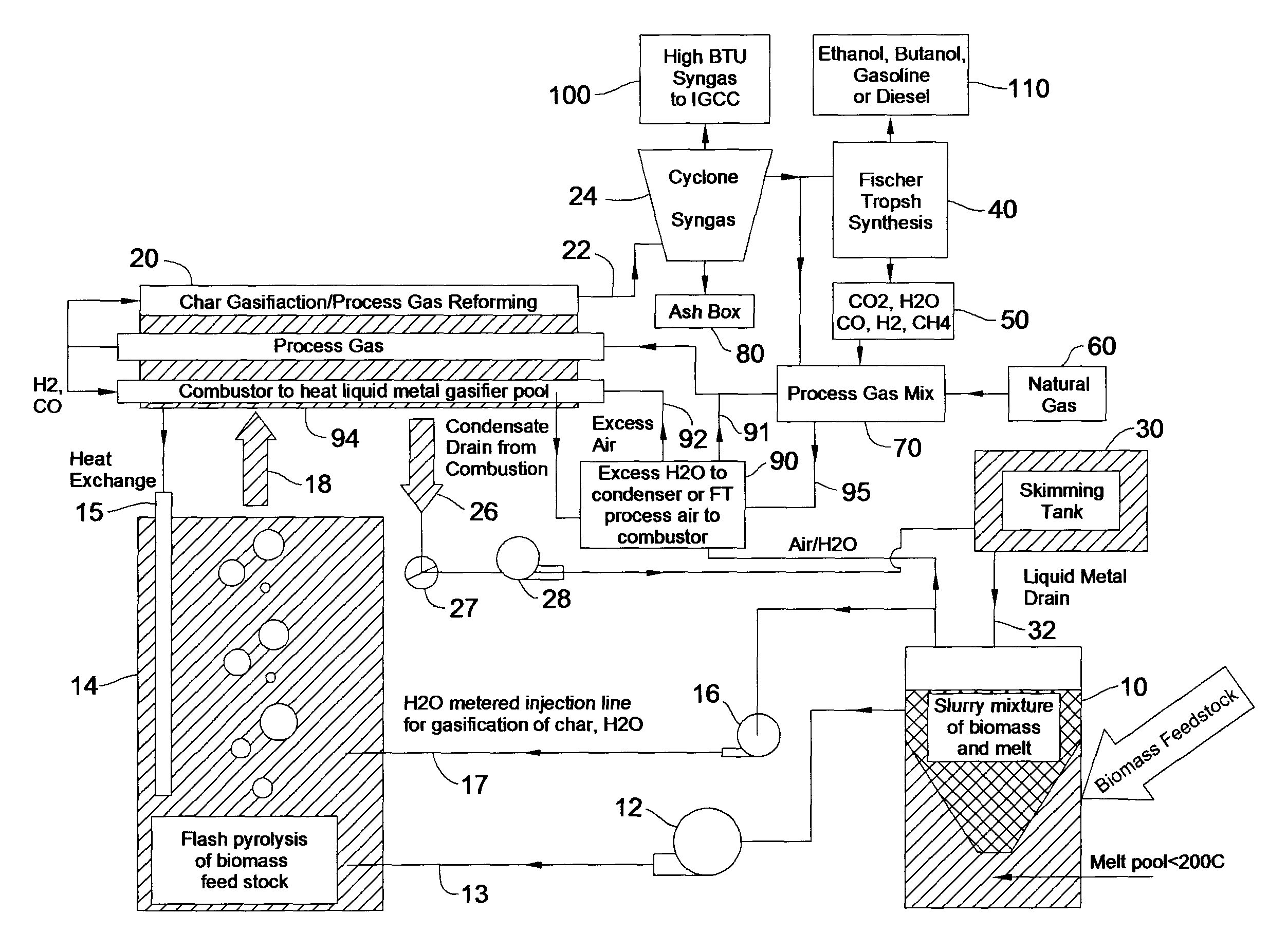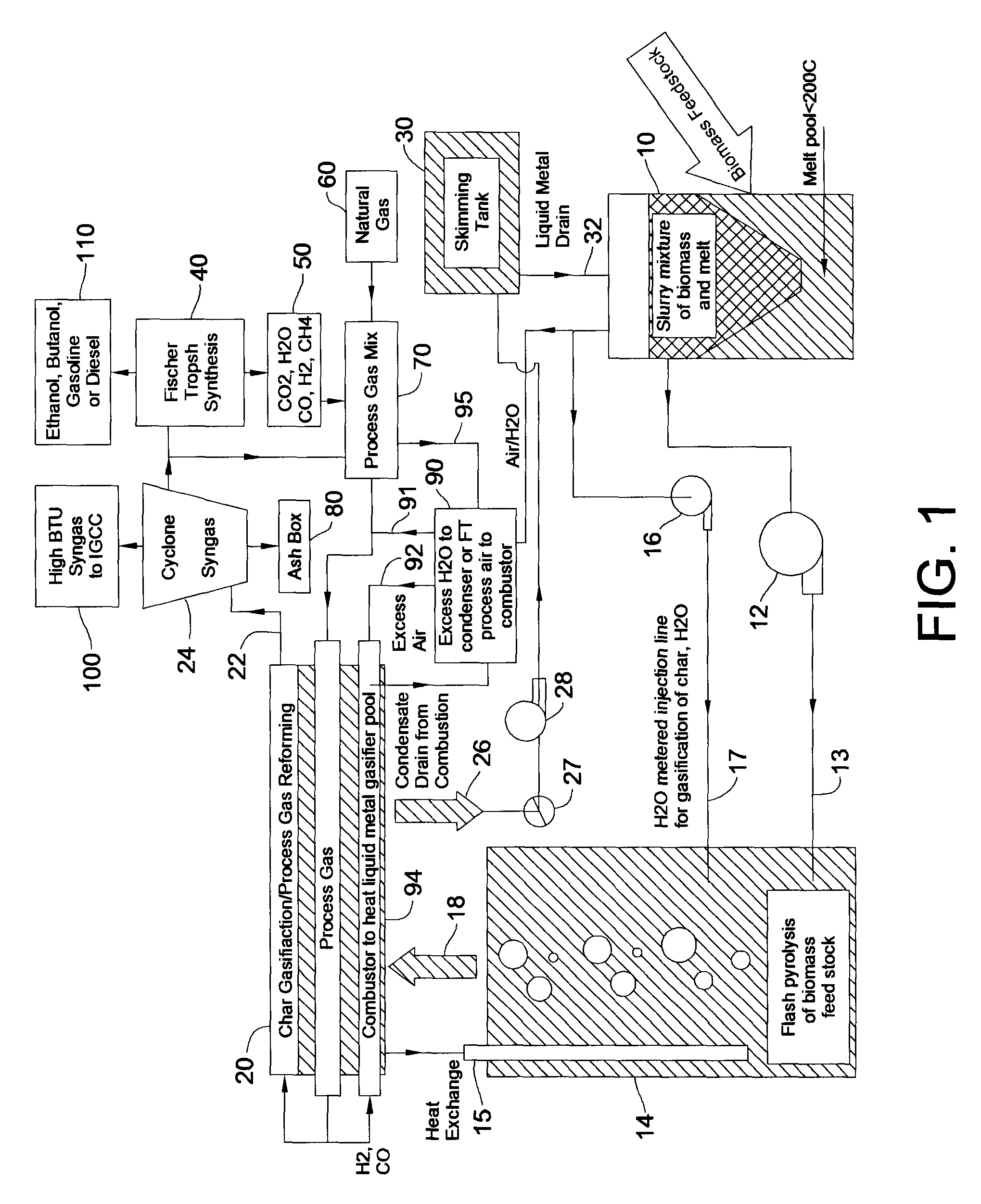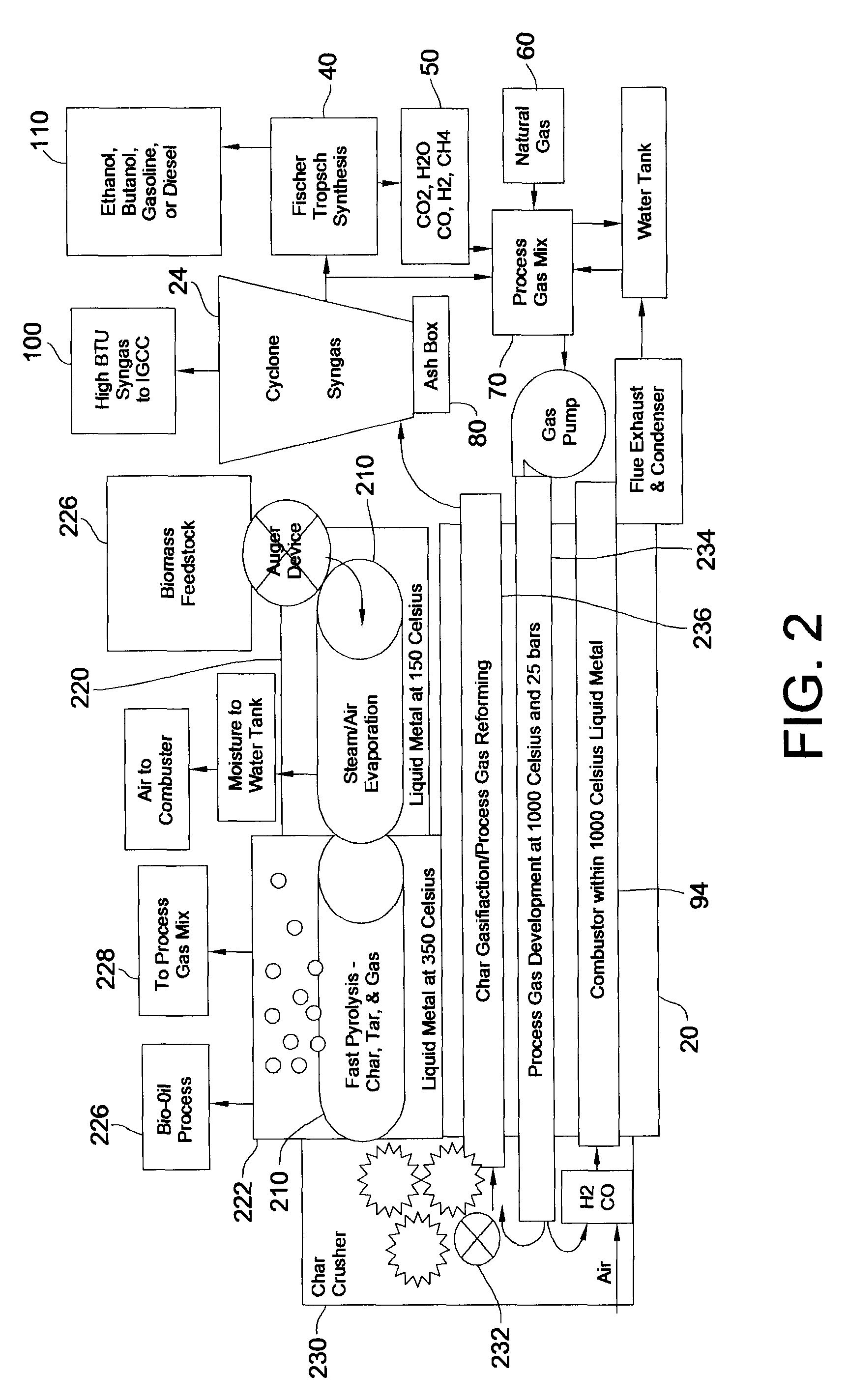Method and apparatus to produce synthesis gas via flash pyrolysis and gasification in a molten liquid
a technology of flash pyrolysis and gasification, which is applied in the direction of combustible gas production, molten salt/metal gasification, combustible gas purification/modification, etc., can solve the problem of steam reducing the heating value of the resulting product gas, and achieves low cost, low cost, and high efficiency.
- Summary
- Abstract
- Description
- Claims
- Application Information
AI Technical Summary
Benefits of technology
Problems solved by technology
Method used
Image
Examples
first embodiment
Continuous Gasifier—First Embodiment
[0066]A first version of the invention is a continuous gasifier comprising four main chambers, each chamber having a distinct function. The following discussion is made in reference to FIG. 1, which is a schematic rendering of this first embodiment of the invention. A stirred mixing and drying chamber 10 mixes the biomass with a molten metal at a temperature range that causes rapid water evaporation from the biomass, yet is below the degradation temperature of the biomass. This temperature range is from 100° C. (i.e., the boiling point of water) to about 300° C., with a temperature of about 200° C. or less being generally preferred. Preferably, the biomass is inserted into mixing and drying chamber 10 at atmospheric pressure, near the bottom center of the chamber. The chamber's mixing blades ensure that the floating biomass is adequately mixed with the molten metal-biomass slurry exiting the chamber.
[0067]The molten metal-biomass slurry is then tr...
examples
[0106]The following Examples are included solely to provide a more complete description of the invention disclosed and claimed herein. The Examples do not limit the scope of the invention in any fashion.
Bench-Scale Test Equipment:
[0107]To provide a scale-up relationship with a pilot-scale gasifier, a bench-scale reactor according to the present invention was fabricated and used to test flash pyrolysis results using varying sizes of feedstock wafers and varying feedstock moisture levels. The test device included a primary molten-metal chamber deep enough to test various reaction pressures and reaction times. The device likewise included a host of sensors so as to characterize the process with dynamic measurements of heating and syngas bubble growth. The test device also was able to measure the contents of the developing and bursting syngas bubble to measure the degree of biomass conversion.
Liquid Metal Bath Chamber and Heating:
[0108]The main variable affecting the dimensions of the m...
PUM
| Property | Measurement | Unit |
|---|---|---|
| temperature | aaaaa | aaaaa |
| boiling point | aaaaa | aaaaa |
| boiling point | aaaaa | aaaaa |
Abstract
Description
Claims
Application Information
 Login to View More
Login to View More - R&D
- Intellectual Property
- Life Sciences
- Materials
- Tech Scout
- Unparalleled Data Quality
- Higher Quality Content
- 60% Fewer Hallucinations
Browse by: Latest US Patents, China's latest patents, Technical Efficacy Thesaurus, Application Domain, Technology Topic, Popular Technical Reports.
© 2025 PatSnap. All rights reserved.Legal|Privacy policy|Modern Slavery Act Transparency Statement|Sitemap|About US| Contact US: help@patsnap.com



